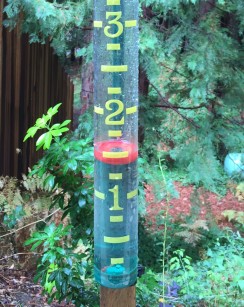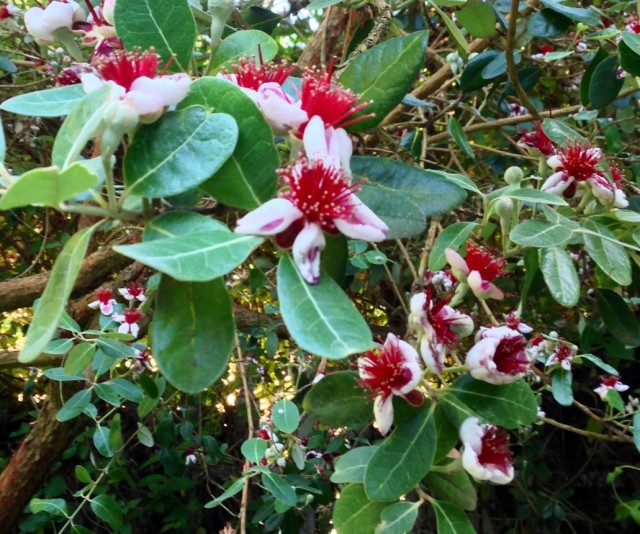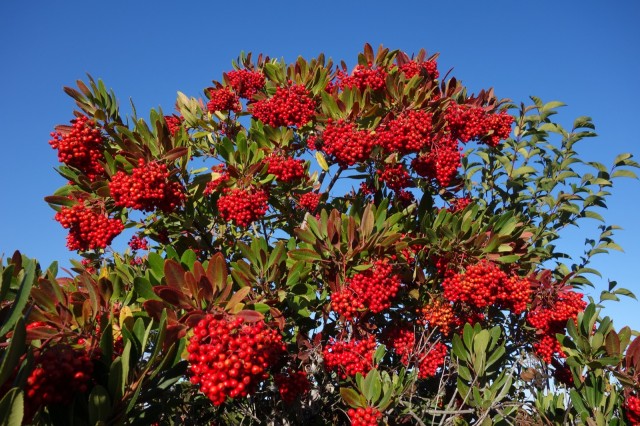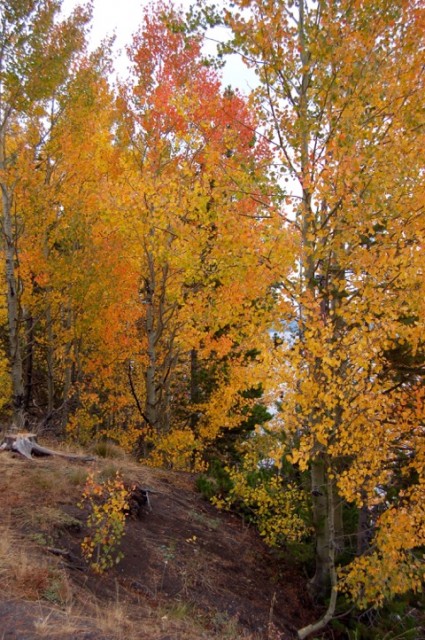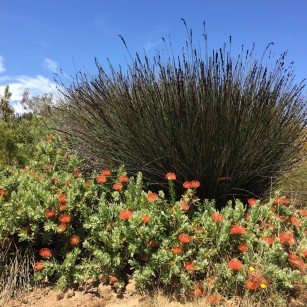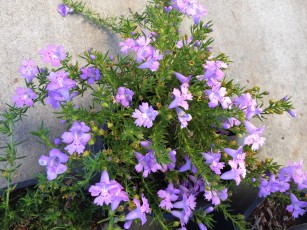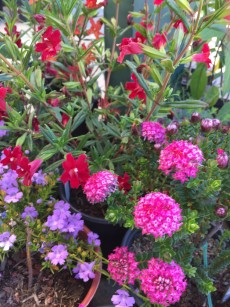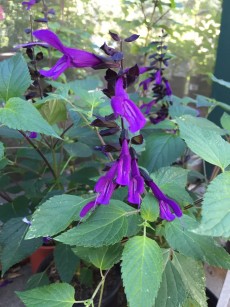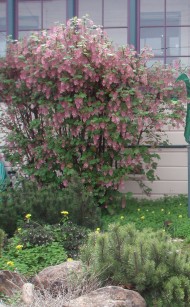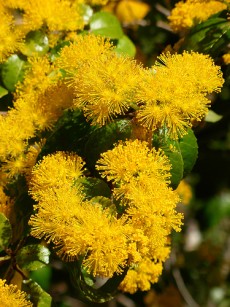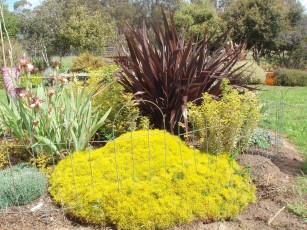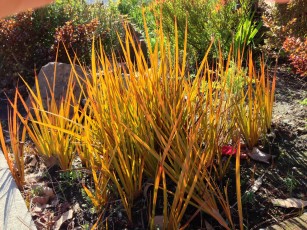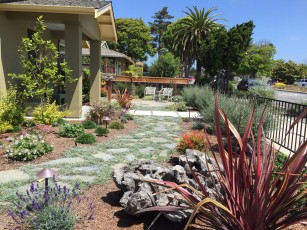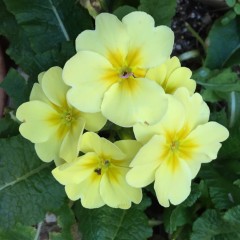
Do you ever look at the collection of cut roses at the market and think ?Which is my favorite color today?? Sometimes it?s the strawberry pink ones I?m drawn to other times i like butterscotch or deep red. It?s the same dilemma in my garden. I try to use restraint and stick to just 3 colors but who can do that, really? In early spring I love the soft pink and pure white of bleeding hearts, camellias and early rhododendrons but maybe because I?m surrounded by so much green, I?m drawn in summer to the bright jewel colors of orange, yellow and red in my garden.
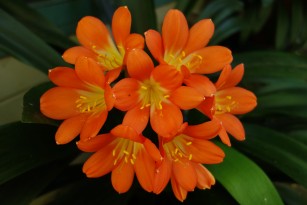
I?m looking forward now to my orange clivia flower clusters that are emerging from deep within the dark green strappy leaves and will be opening soon. The color is especially vivid on a dark rainy day. I also have lots of deep golden and red primroses blooming now. I?ve enjoyed these same plants blooming repeatedly for many years in partial shade. I even get some sporadic blooms throughout the summer.
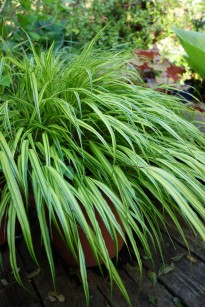
Also at this time of year I get color from foliage too. My ?All Gold? Japanese forest grass and the variegated one have emerged from winter dormancy and they are some of my favorites. Besides being deer resistant the sound of the leaves rustling in the wind adds another dimension to the garden. The chartreuse leaves of heuchera ?Citronelle? – coral bells – add a colorful touch of foliage all year round. There?s a variety called ?Lemon Chiffon? and another named ?Lime Rickey? that i want to add to my collection also.
Later in the season I look to brighter flowers to brighten my garden. High on my wish list for several years is the kniphofia or red hot poker. In addition to yellow and red varieties there?s a cool dwarf one called ?Mango Popsicle? available now. This terrific drought tolerant plant attracts hummingbirds and blooms continuously from late spring into fall. Other colors in this dwarf ?Popsicle? series are banana, creamsicle, lemon, papaya, pineapple and fire glow. All would look awesome planted in a drift.
There are so many plants I want to add to my perennial garden on the terraces between the low rock walls. Some of the existing plants are California natives like salvia ?Bee?s Bliss? with some water smart South African plants such as coleonema ?Sunset Gold? and leucodendron ?Safari Sunset? and an Australian grevillea ?Coastal Gem? thrown in.
Because I w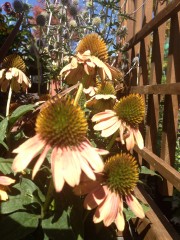 ant to add more vibrant colors to this area I?m looking to some of the new?echinacea or coneflower. From deep gold to pumpkin orange to red-orange sunset colors this perennial has medium water needs once established and is deer tolerant. I?m hoping the seed heads will attract more goldfinches to my garden if I don?t deadhead but allow the flowers to remain on the stalks throughout the summer and into the fall. I can also plant more California native grasses for the goldfinches like blue and yellow-eyed grass and festuca californica.
ant to add more vibrant colors to this area I?m looking to some of the new?echinacea or coneflower. From deep gold to pumpkin orange to red-orange sunset colors this perennial has medium water needs once established and is deer tolerant. I?m hoping the seed heads will attract more goldfinches to my garden if I don?t deadhead but allow the flowers to remain on the stalks throughout the summer and into the fall. I can also plant more California native grasses for the goldfinches like blue and yellow-eyed grass and festuca californica.
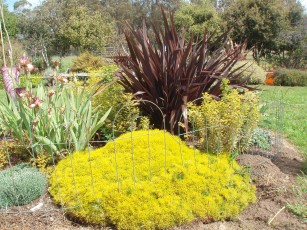
A plant like santolina ?Lemon Fizz? provides chartreuse mounds of fragrant foliage for year-round color. In the summertime it?s topped with bright yellow flowers. This compact evergreen plant is perfect to edging pathways, borders and in herb gardens. Plant in mass for a colorful, drought tolerant ground cover.
I have quite a few native sticky monkey flowers in orange and yellow that the

hummingbirds love. Also the reddish-orange California fuchsia adds color to my landscape later in the summer cascading over the rock wall. A lemon yellow fremontodendron or flannel bush would add some height to my slope.
Also I?ve wanted an Island Snapdragon or galvezia speciosa to add to my red-yellow-orange color scheme. This evergreen California native blooms with bright red snapdragon-like flowers in late winter through early fall. It?s a tough plant and very adaptable to many garden situations and soils. It can
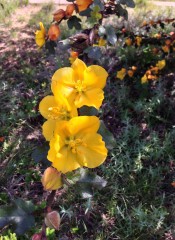
even be hedged or pruned to ground level to keep the foliage fresh.
The bright colors of yellow, orange and red play well with blues and purples and are especially useful in mid-summer when the harsher light of the direct overhead sun can wash out paler hues.

